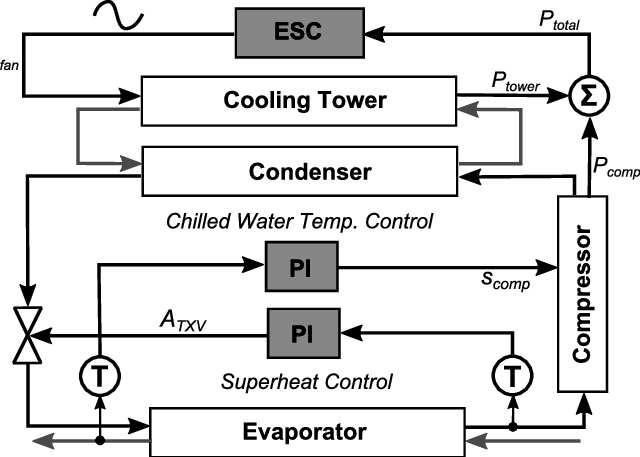Industrial chiller is a kind of chiller, which can be divided into air-cooled chiller and water-cooled chiller. The chiller is a kind of water cooling equipment, which can provide constant temperature, constant current and constant pressure. So how does the condenser system controls the chiller? Let’s go go for a look.
Minimum refrigerant pressure differential
Every chiller requires a certain refrigerant pressure differential between the evaporator and condenser in order to operate. The chiller must develop its pressure differential within a manufacturer-specified time or its controls will shut it off. During some start-up conditions, this pressure differential may be hard to produce within the time limitation.
The flow reduction options include cooling tower bypass, chiller bypass, one or two throttling valves in the condenser-water pipe with the pump riding its curve, a variable-speed condenser water pump. After the minimum-pressure differential is reached, the flow may be increased as long as that minimum-pressure difference is maintained. Some people become concerned with possible fouling of condenser-water tubes during these start-up conditions. There is little to fear due to the short duration of reduced flow operation and the limited occurrences.
Condenser-water temperature control
Cooling-tower-fan control cooling towers operate to produce a desired sump water temperature. As the heat rejection load and ambient wet-bulb temperature change, the cooling tower fans must move more or less air to produce the desired water temperature.
Two-speed fans
The installation of two-speed cooling tower fans is an option that reduces temperature swings. Typically, the low fan speed is between 50 and 70 percent of full speed. Since the heat rejection changes roughly in proportion with the fan speed, the temperature swing will be only 50 to 75 percent of cycling a single fan. Again, take care not to cycle too often between speeds-or the gear box may incur excessive wear and fail. A distinct advantage of two-speed fans is that at low speed, the fan power is greatly reduced.
“Pony” motors
Another option offered by cooling-tower manufacturers is to have two separate motors available to drive the fan. The smaller motor is referred to as a “pony” motor. It operates at two-thirds of the full speed and uses about 30 percent of the full speed power. While controlling the tower, it is important to minimize cycling between speeds.
Variable-speed drives
Because the cost of variable-speed drives for cooling tower fans has decreased, variable-speed drives have become more prevalent than either two-speed fans or pony motors. Using variable-speed drives on cooling-tower fans offers two distinct benefits. First, the tower water temperature control is extremely good. Second, the fan power varies with the cube of the speed, so there is great potential for energy savings. Variable-speed drives also allow the fan speed to be changed without fear of gear box or motor wear.

